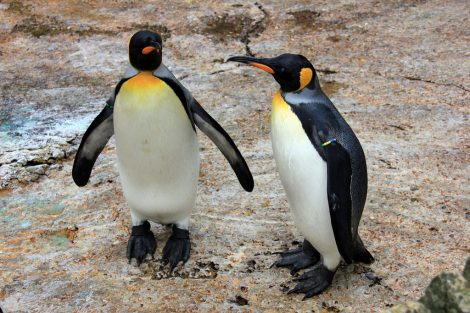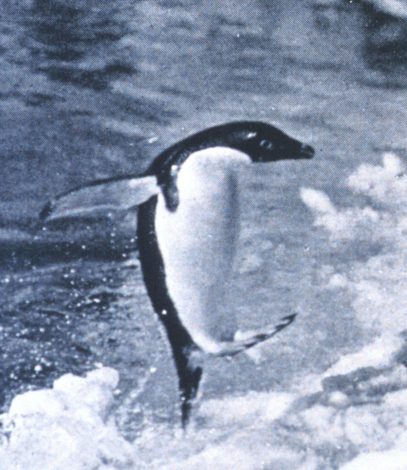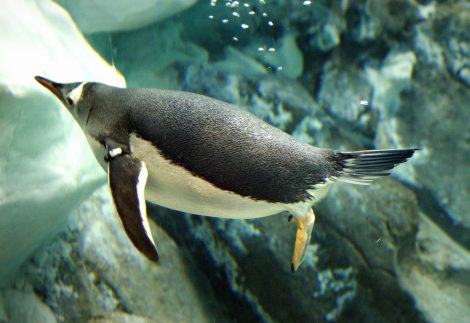How do Penguins Get Around?
Penguins are adorable birds that are flightless and they waddle on land. They swim or almost fly in the water. Penguins slide on their bellies to move. Penguins are spectacular when they get around in the water by swimming or diving. Their waddling walk on land makes them a cuddly bird in the marine.
Swimming, walking, and sliding is their major ways of getting around. However, they do jump from one cliff or rock shelves to another. Their predominant way of moving is by swimming in the ocean.
Penguins are flightless birds; they don’t have wings, unlike other birds. Penguins’ wings transformed into flippers used for swimming. When the ancient penguin species lost their ability to fly, the penguins’ family became flightless and became efficient swimmers and divers.
Some people consider penguin’s waddling walk as an attractive one and some consider its untidiness. There are 17 species of penguins in the world, each being different from each other in features except the black and white body and the waddling walk.
The Physique of Penguins:
Penguins have strong but short legs. When penguins stand or waddle on the land it will seem like they don’t have knees. But, penguins do have knees. The feathers covered over them make them invisible.
Penguin’s legs are the composition of short femur, tibia, knees, and fibula. The standing penguin’s knees are similar to that of human knees. Since the plumages cover the penguins’ knees they appear to have short legs and no knees.
Penguins have a long bone structure in the legs. The body of penguins looks bulky where it is covered by the blubber which is the fat layer that protects them from the frigid atmosphere. It is obvious that living being that doesn’t have knees will waddle.

But Why Do Penguins Waddle Even Though when They Have Knees?
Penguin’s legs are made to master swimming than walking efficiently on land. Their legs are arranged a little back to their body and that is also a reason why penguins waddle.
Waddling walk is not only the character of penguins that are flightless bird species; other birds do waddle like penguins. Like any other birds, penguins also don’t use the tip of the toes to walk. Penguins use only the back of their feet to walk and hence they waddle rather than walking.
By way of waddling, they use less energy which is the advantage for the species to reserve for the most significant time. They cannot walk faster because of their bulky body and their bone structure.
Penguins walk similar to the walk of obese individuals or pregnant women. When penguins swim it will seem like they don’t bend their legs but, they do bend their long legs.
When penguins are on land they stay in colonies. They stand together mainly when they are molting or breeding. They usually get around on land in two ways,
- One is by the support of their brush-like tail and walks like a cuddling waddling individual.
- The other one is by the face down, kicking their feet and dabbling with the wings.
Penguins pop out of the sea once they finish finding food. On land, they also stretch themselves to release the excessive heat in the body in warmer days. They stretch by lying down on the land and they fluff their tiny feathers and open up the scaly wings apart to adjust to the atmosphere.
Penguins Become Airborne to Get around in the Sea:
Penguins become airborne only when they dive into the sea. They spend almost 80-85 percent of their lives in the marine. They adapt the surrounding by the tiny waterproof feathers, solid and strong bones which makes them a good fit for the sea life.

Penguin’s porpoise and gets into the water for prey. They follow the porpoising technique to have a clear view of the prey that is underwater and also when they want to escape from the predators and ice shelves.
Swimming and Getting Around:
Penguins swim swiftly than their prey and also predators. They move like a torpedo underwater. The waterproof feathers lock the air and the wings and tail make them swim effectively.
Emperor penguins the largest of all the living penguins stay underwater for about 25 minutes and dive to the depth of 1,700 feet. They have the natural tendency to maintain the oxygen level for their underwater actions.

The body structure of the penguins is the most contributing to their swimming ability. They can take easy turns while the following prey or when threatened by the predators.
Conclusion:
Penguins move their colonies respective to the place where they find a lot of food sources. The places depend on the species. They love to be in the colonies to keep comfortable during winter and feel protected.
Penguins since they are marine flightless birds, they get around majorly in water. They travel a long distance in the water and also migrate in the same way. Penguins often found less competent while migrating by lands due to their obese bodies.
On land, apart from walking penguins enjoy gliding by their bellies and they look like they have been popped out by something underwater. The energy storing capability falls as a core aid for the penguins to get around in the marine world.
References:
https://sciencing.com/penguins-move-4567706.html
http://sege.blogspot.com/2005/04/how-do-penguins-get-around.html
http://factsanddetails.com/world/cat53/sub339/item2184.html
https://wonderopolis.org/wonder/do-penguins-have-knees
Image Source:
- King penguins by Karen Roe / CC BY
- Penguin jumping onto the ice surface from the water by pingnews.com / CC BY
- Gentoo penguin underwater by Bernard Spragg. NZ / CC BY
